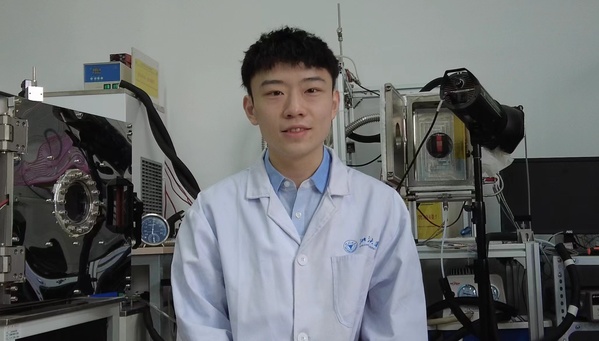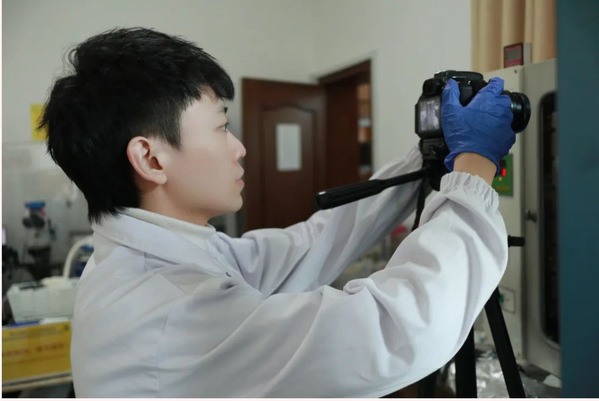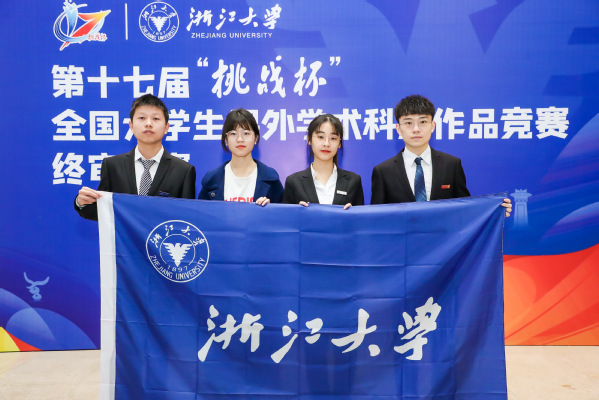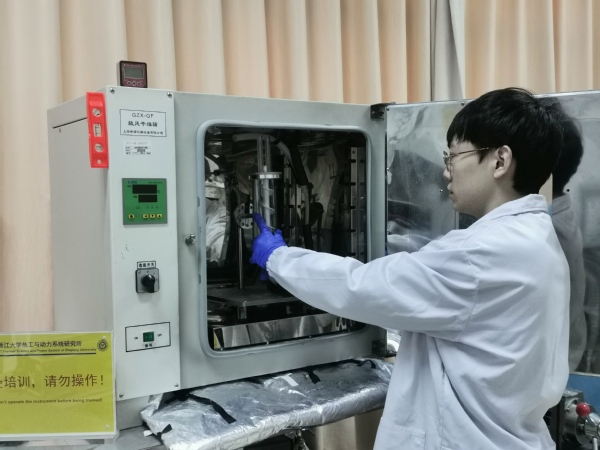Dialogue@ZJU: With LI Zirui from College of Energy Engineering
[Message from the editor: LI Zirui, a doctoral student from College of Energy Engineering, is one of the recipients of the 12th “Top Ten Students” of Zhejiang University. Insightful, inventive and industrious, LI strives on his way to a scientist with the commitment to realizing a blueprint with “zero-carbon buildings”. In this dialogue, we will learn more about his growth trajectory as a researcher as well as an innovator.]

Q1: Congratulations on your prize-winning. You strikes the audience as a youth imbued with research enthusiasm, so let’s get started with your major. What drove you to study energy engineering in your undergraduate period? When choosing your study path, have you actually foreseen the world would turn to clean energy as it is nowadays?
LI: The initial reason for my choice of major is actually related to my hometown, Anshan, Liaoning Province. ANSTEEL, a well-known steel industry in my hometown, was the first resumed construction steel enterprise in China. The development of heavy industry brought about rapid economic growth, but it was also accompanied by environmental pollution, say, smog. Since then, I have been thinking about a question, how to avoid the impact of traditional energy on the environment in the industrial revolution? Is there a cleaner and more efficient way to use energy? Based on this, after entering Zhejiang University, I firmly chose the major of Energy and Environmental Systems Engineering. Later, after entering the doctoral stage, I continue to study the medium-and-low-temperature phase change energy storage technology for low-carbon heating supply as my research direction.
Carbon neutrality has increasingly been a global concern, and the issue can be addressed from two aspects: to reduce carbon emission and to seek clean energy as the substitutes, in short, to curb emissions and broaden sources. The transformation of the main energy consumption structure to clean energy is the process of broadening the sources; the rational recovery and effective utilization in the field of energy spillover is a path to curb emissions. My research direction is mainly oriented to the energy storage technology in the field of waste heat utilization.

Q2: You’ve performed excellent not only in your research, but also in entrepreneurship, with 8 SCI papers published and 10 national patents for invention authorized within the first three years of your Ph.D. What do you think is the greatest challenge in translating your research into production?
LI: The biggest difference between scientific research and industrial production is that the material cost is never the principal factor to be considered in the lab, yet it matters much more in industrial production. For my current research, I am looking for enhanced heat transfer technologies with high power density and low economic cost in thermal storage systems. In addition, for the practical application of phase change materials, I think how to extend the service life is also one of the key issues. Through material modification to achieve the high service-life heat storage capacity of phase change materials is also one of the current research contents of our team.

Q3: In terms of innovation, your team recently won the first prize in the 17th “Challenge Cup” Entrepreneurship Competition with a promising project, “Super heart—on high power high frequency super capacitor energy storage technology”. Can you explain briefly how this project would contribute to SDGs?
LI: This project is mainly based on the supercapacitor team of College of Energy Engineering. There are actually many cases of wasted energy in daily life, for instance, the gravitational potential energy during the descending of a heavy load in a gantry crane in a port, the mechanical energy during braking in a subway, and the alike. This project is to collect and utilize these kinds of energy through supercapacitors.

Q4: Zero-carbon is a keyword of your study. To realize your expectation of “zero-carbon buildings”, what are the existing obstacles to be tackled in your research field?
LI: I believe it is the ultimate vision of researchers in the energy field to achieve zero carbon emissions, not only in buildings. One of the current research directions of our team is working for the energy storage technology, which could be used in low-carbon buildings. Zero-carbon building is a building that relies solely on renewable energy to support its own operation. However, renewable energy sources such as solar and wind inherently have problems of discontinuity and volatility. The use of phase change energy storage technology can tackle this problem and achieve seasonal energy storge, realizing “zero-carbon buildings” truly independent of the grid and relying only on solar, wind and other renewable energies.
Q5: Casting a backward glance, can you come up with three key traits to wrap up your growth as an innovator on the path to SDGs?
LI: The first keyword is persistence, the process of scientific research is often a process with lagging results, that is to say, a long time with no results outputting is a very normal situation. So, in the process of research, one need to endure this loneliness and adhere to his original intention of scientific research. The second keyword is innovation, which requires broadening the boundaries of the research field and not being limited to the existing research ideas. The last keyword is adaptability. Whether it is traditional energy like coal, or clean energy like solar energy, both are provided by natural resources. Therefore, the process of iteration of different energy consumption structures is often the search for innovative technologies to adapt to the current energy structure. Also, it is a process of human adaptation to changes in the natural environment. I think this is also known as Sustainable Development Theory.
Interviewer: ZHANG Jinmei
Photo credit: LI Zirui